Compare these two electric cars
With our tool electric vehicle comparator you can compare the :
Monday to Friday
9am - 12.30pm - 2pm - 7pm
Focus on the two electric cars
The BYD Han and Hyundai Ioniq 6 promise from revolutionise the automotive industry with their cutting-edge technology. The Chinese brand model BYD offers autonomy impressive, higher top speed, classy design and advanced features. The Hyundai Ioniq 6 stands out for its fast charging, futuristic design and innovative features.
These two electric cars look very promising! With their cutting-edge technology, the two brands are showing their ambition to establish themselves on the European market in the long term. We compared these two own models to help you find the one that best suits your needs. Discover the seductive features of these two cutting-edge electric cars!
Our Hyundai IONIQ 6 test drive
The Korean beats the Chinese on autonomy
When it comes to choosing an electric car, range is one of the most important criteria for buyers. Drivers are looking for an electric vehicle that can meet their needs, whether for personal or business travel. For those who need to cover long distances, an electric car with a longer range will be required.
The two models both offer great autonomy, but let's see how each one stands out.
Also read → Top 6 Korean cars in 2023
BYD Han vs Hyundai Ioniq 6: the range duel
La BYD Han is equipped with a battery lithium-ion from 80 kWh which allows it to cover up to 516 km on a single charge, making it one of the most efficient electric cars in terms of range to date. What's more, the BYD is equipped with an energy recovery function that recharges the battery while driving. It has a speed maximum of 180 km.
From his side, the Hyundai Ioniq 6 is equipped with a lithium-ion battery of 77 kWhenabling it to achieve a speed of 185 km/h slightly higher than its competitor. This battery offers autonomy of up to 614 km on a single charge, an impressive range.
Energy recovery function: why is it useful?
Like the BYD Han, the Ioniq 6 also features an energy recovery function to recharge the battery while driving.
La energy recovery function is a technology that enables electric cars to recover energy when braking or decelerating. This helps to increase its overall range. In practical terms, it uses a system regenerative braking to convert the car's kinetic energy into electrical energy when it slows down or brakes. This energy is then stored in the car's battery and can be used to power the electric motor when the car accelerates again.
It also contributes to reduce brake wearwhich can reduce maintenance costs of the car in the long term. For example, if the electric car travels 100 km, it can recover 2 kWh of battery by braking. This is an important feature for drivers planning to travel long distances.
The Hyundai Ioniq 6 offers a greater range than the BYD HAN. Despite the significant difference in range, the BYD Han and the Hyundai Ioniq 6 are both interesting choices for electric car buyers looking for a long range.
Also read → 2023 ranking of long-range electric cars
Design: bold, innovative exteriors
Design is an important criterion for many electric car drivers. They are attracted by styles that reflect modernity and innovation. of electric cars compared with internal combustion cars. The aesthetics of an electric vehicle play an important role in the driver's purchasing decision. For example, a design that facilitates access to charging sockets or offers extra storage space for charging cables is more attractive and practical.
BYD Han vs Hyundai Ioniq 6: made from eco-friendly materials
They are also more receptive to designs that reflect their commitment to the environment and sustainability. This is the case for Hyundai, Aerodynamics were central to the development of this model. It has a more aggressive appearance, with a wide grille and L-shaped LED headlights. BYD has opted for materials such as aluminium, steel and carbon fibre. As well as being environmentally-friendly components, the use of these lightweight materials gives the car greater energy efficiency. This improves range while maintaining a solid, resistant structure.
In a modern and elegant style
The BYD Han has an elegant, sporty look, with clean lines and an hourglass-shaped radiator grille. Both cars offer modern, elegant styles that distinguish them from one another. The BYD Han has horizontal rear lights that extend across the entire width of the car, while the Hyundai Ioniq 6 has a strip of light connecting the rear lights.
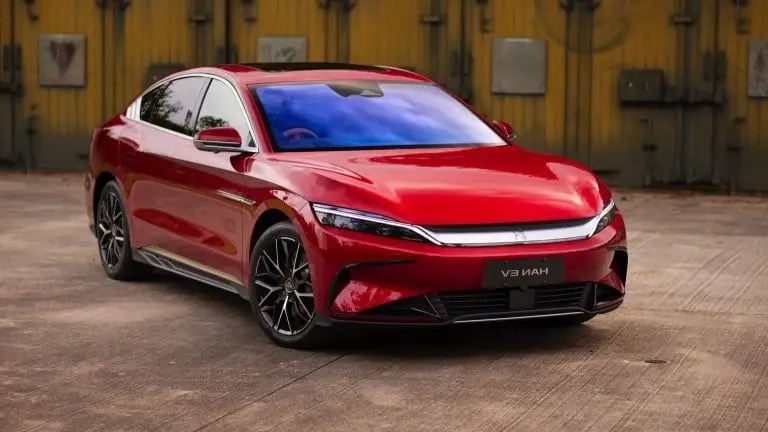
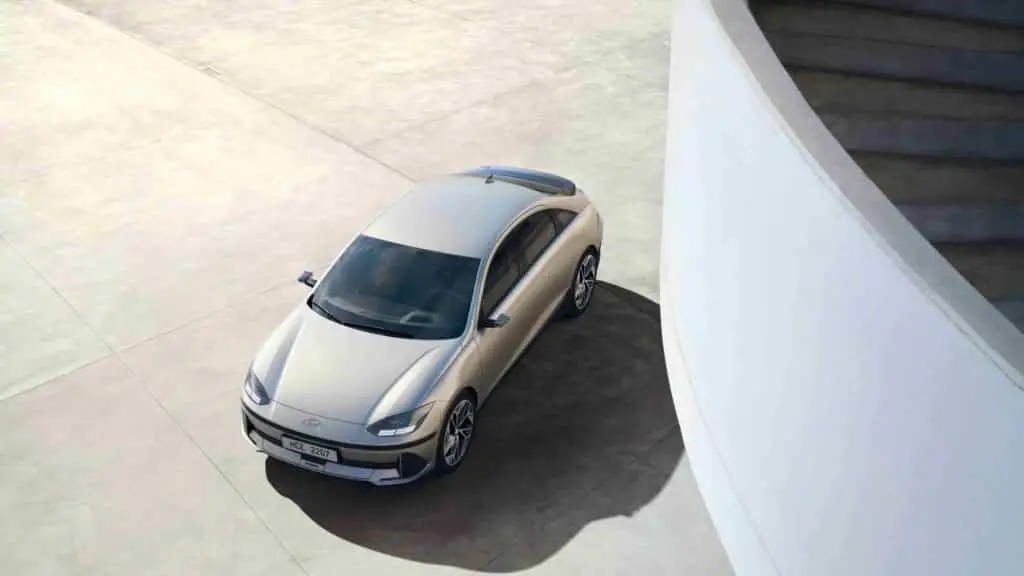
Available in several versions
In terms of dimensions, the BYD Han is slightly larger than the Hyundai Ioniq 6, with a length of 4.97 metres and a width of 1.91 metreswhile the Hyundai Ioniq 6 measures 4.69 metres long and 1.86 metres wide. Both electric cars are available in several versions, offering buyers a variety of options.
La BYD Han is available in four versions:
- standard
- top of the range
- sport
- long autonomy.
L'Hyundai Ioniq 6 is available in three versions:
- standard
- GT Line
- N-Line.
Both cars have modern, aerodynamic designsThis improves fuel efficiency. However, the boot space is small for both electric cars. A major drawback for families.
| Hyundai Ioniq 6 | BYD HAN | |
|---|---|---|
|
Length
|
4 855 mm
|
4 995 mm
|
|
Width
|
1,880 mm
|
1 910 mm
|
|
Height
|
1 495 mm
|
1 495 mm
|
|
Wheelbase
|
2 950 mm
|
2 992 mm
|
|
Tare weight
|
1,900 kg
|
2,250 kg
|
|
Boot volume
|
401 L
|
410 L
|
You would like toto electric?
Beev offers multi-brand 100% electric vehicles at the best prices, as well as recharging solutions.
Attractive features
Chinese and Korean electric saloons offer innovative features and cutting-edge technologies that will satisfy high-tech enthusiasts. These cars also come with a host of interesting options that make their use more pleasant and intuitive for drivers.
The BYD HAN at the cutting edge of technology
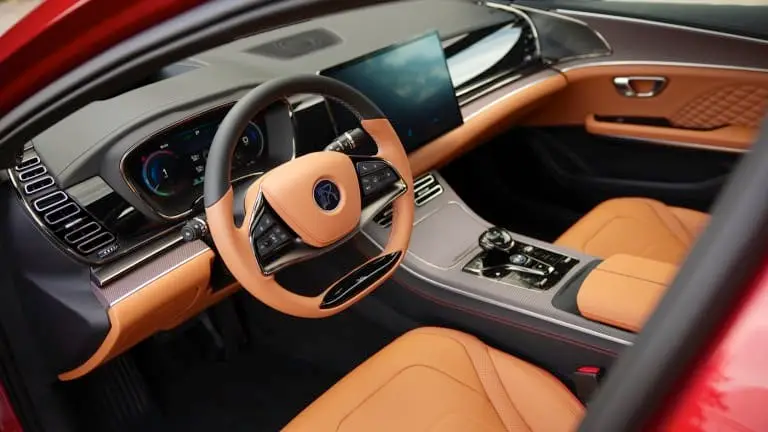
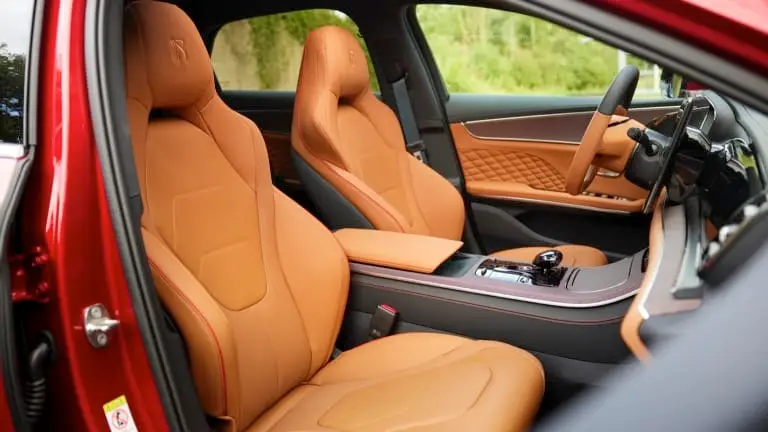
The BYD HAN features a 12.3" LCD dashboard that can be swivelled horizontally or vertically at the front. At the rear, passengers aren't left out in the cold. No less than two other 15.6″ electric touch screens allow those sitting behind to adjust the air conditioning, sound system and lights. What's more, the BYD Han offers a spacious interior and the latest technology:
- 12.3″ LCD instrument panel
- Leather seat
- Panoramic sunroof
- Indoor camera
- 12-speaker Dynaudio® system
- Electrically adjustable driver's seat lumbar support (4D)
However, the BYD Han has a Level 2 autonomous driving system, while the Hyundai Ioniq 6 has a Level 3 autonomous driving system. The level 2 autonomous driving system can perform certain driving tasks autonomously (speed regulation, steering control). It still requires the driver's constant attention to monitor the road ahead and intervene if necessary. Level 3 autonomous driving can manage driving in specific situations, such as motorway driving, without constant human intervention. However, the driver must always be able to regain control of the vehicle if necessary. The autonomous driving system must be able to alert the driver if he needs to regain control of the vehicle. In other words, the Level 3 autonomous driving system allows the driver to relax more and concentrate on other tasks. It does not, however, allow them to take their eyes off the road completely and concentrate on other things.
Also read → The Chinese electric car, ready to conquer Europe
Korea's ultra-connected top range
For the Hyundai Ioniq 6 with the 'EV Performance Tune-up' system, the driver can configure steering force, engine power, accelerator pedal sensitivity and a manually selectable all-wheel drive according to his or her wishes, and adjust them to his or her needs with various combinations. What's more, with 'e-Active Sound Design', the Korean saloon has an optimal spaceship-like sound inside, which changes according to driving conditions. In addition to the 12-inch infotainment screen, the modular dashboard incorporates an equally large digital cockpit. It offers a real-time map display of the radius based on the current state of charge.
The system's 'connected car' services help to find and plan the best route, for example to a recharging point en route. In addition, the infotainment system and map material can be updated via the network using over-the-air updates. Smartphones can be integrated via Apple CarPlay and Android Auto. The Hyundai Ioniq 6 allows multiple Bluetooth connections so that two devices can be paired at the same time. "The eight loudspeakers of the Bose premium audio system, including one subwoofer, are distributed throughout the vehicle. This low-frequency speaker improves the sound quality of the car's entire audio system. It is designed to produce deep, rich bass, providing a more immersive and enjoyable musical experience for the car's passengers!
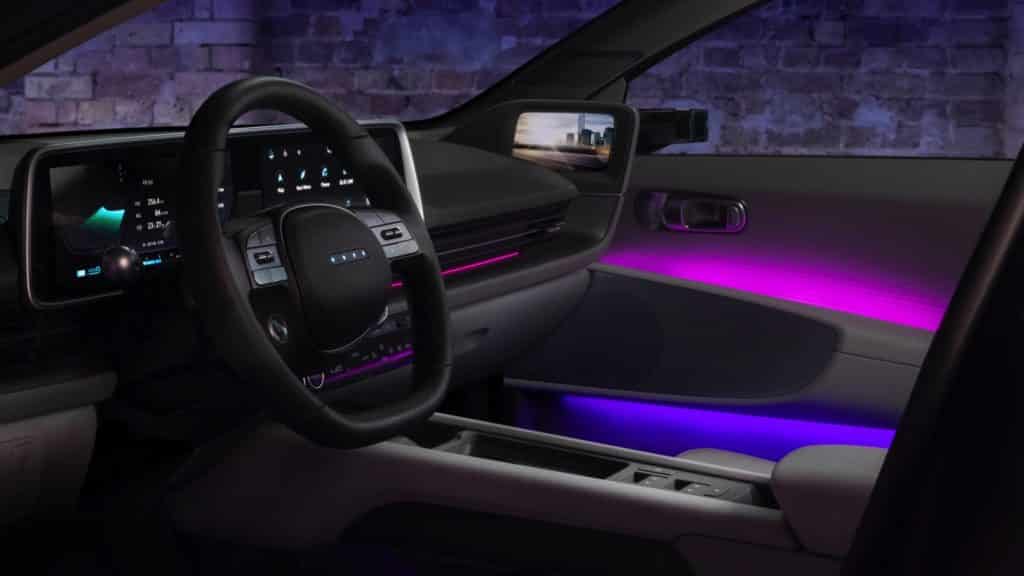
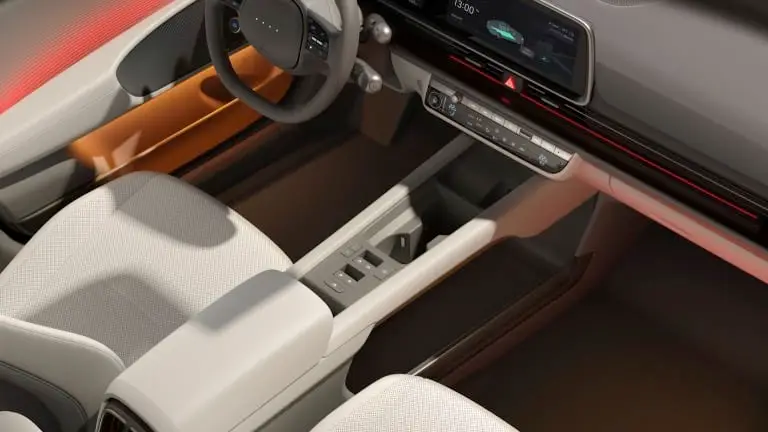

BYD Han vs Hyundai Ioniq 6: technical specifications
| BYD HAN | Hyundai Ioniq 6 | |
|---|---|---|
|
Engine power
|
363 kW
|
168 kW
|
|
Number of horses
|
487 hp
|
229 hp
|
|
Autonomy
|
516 km
|
614 km
|
|
Battery power
|
80 kWh
|
77 kWh
|
|
AC wall box load power
|
22 kW
|
11 kW
|
|
AC recharge time (0 to 100 %)
|
2 h 15 min
|
7 h 10 min
|
|
DC fast charge power
|
85 kW
|
350 kW
|
|
DC fast recharge time (10 to 80 %)
|
30 minutes
|
18 min
|
|
0 to 100 km/h
|
3.9 sec
|
7.4 sec
|
|
Fuel consumption (WLTP)
|
18.5 kWh/100 km
|
14.3 kWh/100 km
|
|
Maximum speed
|
180 km/h
|
185 km/h
|
|
Rate
|
70 800 €
|
56 900 €
|
In conclusion
The features of the BYD Han and the Hyundai Ioniq 6 offer advanced performance and functionality. However, to determine which of the two is best suited to your needs. You need to consider your needs, such as commuting, long-distance driving and the features you want. The budget available is also a key factor.
Taking into account the price of the two vehicles, which sold for more than €47,000, they do not allow access to the environmental bonus. The other main competitor, the Tesla Model 3 is better placed, with prices starting at €44,990. Despite this, the boot volume and rear space are disappointing for the two electric saloons of this generation.
So you know more about the Hyundai Ioniq 6 and BYD Han, the two electric cars that promise to revolutionise the European market in 2023? Which one appealed to you most and why? We look forward to reading your answers in the comments!
































